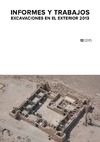Identificador persistente para citar o vincular este elemento:
https://accedacris.ulpgc.es/handle/10553/58526
| Campo DC | Valor | idioma |
|---|---|---|
| dc.contributor.author | Onrubia Pintado, Jorge | en_US |
| dc.contributor.author | Bokbot, Youssef | en_US |
| dc.contributor.author | Amani, Fethi | en_US |
| dc.contributor.author | Cáceres Gutiérrez, Yasmina E. | en_US |
| dc.contributor.author | González Marrero, María del Cristo | en_US |
| dc.contributor.author | Izquierdo Benito, Ricardo | en_US |
| dc.contributor.author | Juan Ares, Jorge de | en_US |
| dc.contributor.author | Laïtouss, Lahoucine | en_US |
| dc.contributor.author | López-Menchero Bendicho, Víctor Manuel | en_US |
| dc.contributor.author | Marchante Ortega, Ángel | en_US |
| dc.contributor.author | Moreno García, Marta | en_US |
| dc.contributor.author | Rodríguez Santana, Carmen Gloria | en_US |
| dc.date.accessioned | 2019-12-16T16:22:19Z | - |
| dc.date.available | 2019-12-16T16:22:19Z | - |
| dc.date.issued | 2015 | en_US |
| dc.identifier.other | Dialnet | - |
| dc.identifier.uri | https://accedacris.ulpgc.es/handle/10553/58526 | - |
| dc.description.abstract | la campaña de 2014 del proyecto Investigaciones arqueológicas en la región de Sus- Tekna (Marruecos) ha permitido confirmar la identificación del actual caserío de Ksabi con la antigua ciudad caravanera de Tagaos. Se trata del importante enclave comercial, artesanal y agropastoril que, a partir del siglo xiii, sustituye como capital regional al vecino «puerto» transahariano de Nûl Lamta, activo al menos desde el siglo x y asimismo localizado en el curso de los trabajos arqueológicos enmarcados dentro del citado proyecto. Por otra parte, durante esta campaña se ha procedido, también, a analizar distintos materiales arqueológicos. Estos habían sido recuperados tanto en la zona arqueológica de Ksabi, como en otros yacimientos catalogados y estudiados en el conjunto de la cuenca del ued Nun. Sin duda, una de las contribuciones más destacadas de estos análisis estriba en la certificación de que la acumulación antrópica de conchas de Stramonita haemastoma hallada en 2011 en Fum Asaca (ST-J1) en posición estratigráfica primaria, se corresponde, casi con toda seguridad, con una instalación de época romana relacionada con la obtención de púrpura getúlica. | en_US |
| dc.description.abstract | The 2014 campaign of the archaeological research project in the region of Sous-Tekna (Morocco) confirmed the identification of the current village of Ksabi with ancient caravan city of Tagawst. This is a major commercial, artisanal and agro-pastoral enclave, from the thirteenth century, replaced as regional capital to neighbouring trans-Saharan «port» of Nûl Lamta, active since at least the tenth century and also located in the course of archaeological work framed within this project. Moreover, during this campaign has also proceeded to analyse various archaeological materials. These were from both the archaeological site of Ksabi, and other sites catalogued and studied in the entire basin of the wadi Noun. Undoubtedly, one of the most important contributions of this analysis lies in the certification that the anthropic accumulation of shells (Stramonita haemastoma) found in 2011 in Foum Assaka (ST-J1) in primary stratigraphic position, corresponds, almost certainly, with a Roman period installation related to obtaining Gaetulian purple dye. | en_US |
| dc.language | spa | en_US |
| dc.relation.ispartof | Informes y trabajos (Instituto del Patrimonio Cultural de España) | en_US |
| dc.source | Informes y Trabajos (12), p. 315-344 | en_US |
| dc.subject | 51 Antropología | en_US |
| dc.subject.other | Excavación arqueológica | en_US |
| dc.subject.other | Tagaos | en_US |
| dc.subject.other | Marruecos | en_US |
| dc.subject.other | Arqueofaunas | en_US |
| dc.subject.other | Cerámicas | en_US |
| dc.subject.other | Archaeological excavation | en_US |
| dc.subject.other | Pottery | en_US |
| dc.subject.other | Archaeofauna | en_US |
| dc.subject.other | Morocco | en_US |
| dc.subject.other | Tagawst | en_US |
| dc.title | Investigaciones arqueológicas en la región de Sus-Tekna (Marruecos): informe preliminar de los resultados de la campaña de 2014 | en_US |
| dc.type | info:eu-repo/semantics/article | en_US |
| dc.type | Article | en_US |
| dc.identifier.url | http://dialnet.unirioja.es/servlet/articulo?codigo=5288194 | - |
| dc.description.lastpage | 344 | en_US |
| dc.identifier.issue | 12 | - |
| dc.description.firstpage | 315 | en_US |
| dc.investigacion | Ciencias Sociales y Jurídicas | en_US |
| dc.type2 | Artículo | en_US |
| dc.contributor.authordialnetid | No ID | - |
| dc.contributor.authordialnetid | No ID | - |
| dc.contributor.authordialnetid | No ID | - |
| dc.contributor.authordialnetid | No ID | - |
| dc.contributor.authordialnetid | 115960 | - |
| dc.contributor.authordialnetid | No ID | - |
| dc.contributor.authordialnetid | No ID | - |
| dc.contributor.authordialnetid | No ID | - |
| dc.contributor.authordialnetid | No ID | - |
| dc.contributor.authordialnetid | 3271090 | - |
| dc.contributor.authordialnetid | No ID | - |
| dc.contributor.authordialnetid | No ID | - |
| dc.identifier.dialnet | 5288194ARTREV | - |
| dc.utils.revision | Sí | en_US |
| dc.identifier.ulpgc | Sí | en_US |
| item.fulltext | Con texto completo | - |
| item.grantfulltext | open | - |
| crisitem.author.dept | GIR IATEXT: Patrimonio cultural: textos, materialidades y memorias | - |
| crisitem.author.dept | IU de Análisis y Aplicaciones Textuales | - |
| crisitem.author.dept | Departamento de Ciencias Históricas | - |
| crisitem.author.orcid | 0000-0003-4280-8414 | - |
| crisitem.author.orcid | 0000-0002-7648-3198 | - |
| crisitem.author.parentorg | IU de Análisis y Aplicaciones Textuales | - |
| crisitem.author.fullName | González Marrero, María Del Cristo | - |
| crisitem.author.fullName | Marchante Ortega, Angel | - |
| Colección: | Artículos | |
Los elementos en ULPGC accedaCRIS están protegidos por derechos de autor con todos los derechos reservados, a menos que se indique lo contrario.
